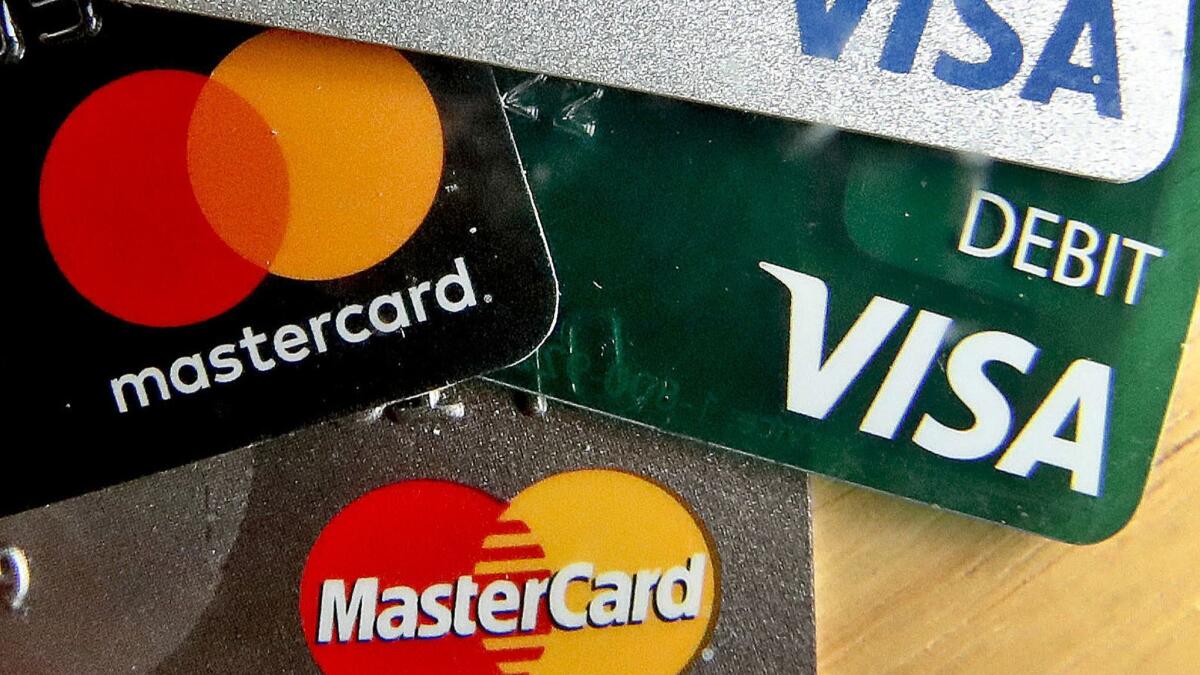Credit scores are rising. Is yours too?

Credit scores are creeping up for most Americans, according to a report from credit bureau Experian.
The average U.S. credit score hit 680 in 2018, up from 675 the year before, the report found. That’s the biggest one-year jump since 2008, but not quite back to the 685 average that year as the Great Recession deepened.
The State of Credit report released Monday looked at a statistically relevant sampling of Experian’s consumer credit database, checking data from the second quarters of 2008, 2017 and 2018. It used the VantageScore credit scoring model, which — like its competitor FICO — ranges from 300 to 850.
Consumers’ scores determine whether they can qualify for credit cards and loans, and how much interest they’ll pay if they do.
The 2018 data showed:
- The highest credit scores again belonged to the oldest consumers (those 72 and older), who clocked in with an average of 732.
- The lowest scores were seen for those 18 to 21 years old, whose scores averaged 639. Americans ages 22 to 35 had an average score of 644.
- People in the 36-to-50-year-old group averaged 662, and people ages 51 to 71 had an average of 706.
Rod Griffin, Experian’s director of consumer education and awareness, said he was heartened to see that young adults’ averages are among the fastest-improving scores.
Their historically lower scores “never concerned me that much because they didn’t have a lot of experience with credit,” Griffin said. Now, he said, their scores are improving, and the improvement is accelerating. “[They] have reached a point in life where they’re using credit more as a financial tool, and doing so effectively.”
A key factor in scoring shows no progress
Griffin said many people overlook a big factor in their credit score: credit utilization, or the portion of a credit card limit that’s in use.
Experts advise using no more than 30% of the credit limit on any card, and lower is better. The best scores go to people who use less than 10% of their limits.
Experian found the average consumer was using about 30% of available credit in 2018, unchanged from 2017. Credit utilization dropped with age, the report found, with the oldest group of consumers using only 15% of their available credit, while the youngest averaged 37%.
Exceeding a 30% credit utilization ratio at any point in a billing cycle on any one of your cards is enough to do damage to your score.
To figure out your credit utilization ratio, divide your total balances by your total credit limit. It is expressed as a percentage. For instance, if your balances are $5,000 and the total of your credit limits is $15,000, your credit utilization ratio is 33.33%.
One trick for keeping your utilization in check is to sign up with card issuers for an alert any time a balance is nearing 30%.
Fortunately for consumers, as soon as a lower credit card balance is reported to the credit bureaus, scores can rebound. Ways to keep utilization low include setting account balance alerts, spreading spending across cards and making more than one payment in a billing cycle.
What to do about your own score
Although average scores are moving up, a 680 score is unlikely to get you the very best rates and terms on credit cards and loans. If you’re looking to build credit, first figure out where you stand. Don’t worry, checking your own credit doesn’t hurt your score.
Then, practice good credit hygiene.
- Pay every bill on time. Your payment history is the largest factor in your credit score.
- Use no more than 30% of the credit limit on any card. Asking for higher credit limits on your cards can help lower the percentage of use — as long as you don’t increase your spending along with the limit.
- Keep credit cards open unless you have a compelling reason (such as high fees or poor customer service) to close them. You want to build up a long history showing responsible credit use. Use each card at least occasionally so the issuer doesn’t close it for inactivity.
- Apply for credit sparingly. A good rule of thumb is to try to leave six months between applications.
- Monitor your credit. You’re entitled to a free look at your credit reports from each of the three credit bureaus every 12 months at AnnualCreditReport.com. Your credit scores are built using the data in your credit reports, so check to be sure the information there is correct.
You can also monitor your score for free via many personal finance websites. Practicing good credit habits over time can help you build a good or even excellent credit score.
O’Shea writes for NerdWallet, a personal finance website.
More to Read
Inside the business of entertainment
The Wide Shot brings you news, analysis and insights on everything from streaming wars to production — and what it all means for the future.
You may occasionally receive promotional content from the Los Angeles Times.










